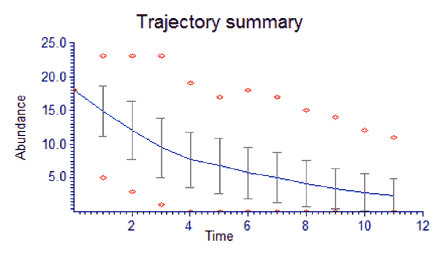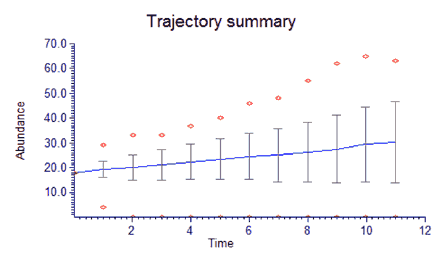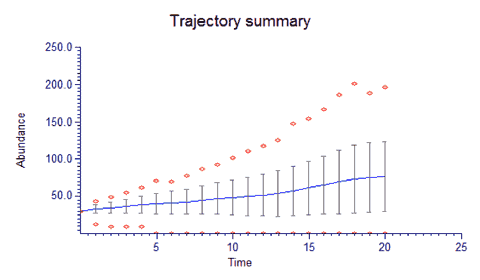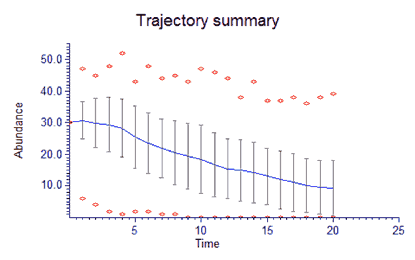To what extent can the Cilician monk seal colony
recover under existing regulations?
Meltem Ok and Ali Cemal Gücü
Middle East Technical University Institute of Marine Sciences
P.O. Box 28 Erdemli Mersin, Turkey
The northeastern Mediterranean coasts of Turkey host the most abundant Mediterranean monk seal colony in the region, which has also tended to further expand in recent years. The status of this colony has been monitored since 1994 by the Middle East Technical University, Institute of Marine Sciences. During past and present studies, various data which are related to size, demographic structure, and vital parameters of the colony have been obtained and evaluated. The analysis of the data reveals positive responses, such as increased breeding success, expansion of habitats and re-population of abandoned habitats. On the other hand, parallel to the increased size in the colony, mortality has also increased, blurring the future of the colony.
After 12 years of study and 6 years of conservation efforts, we have decided to evaluate the past and present status of the Cilician colony as a means of assessing its future. The questions that needed to be answered were listed as:
- What are the positive and negative implications of conservation measures applied in the area on the colony’s demography?
- What are the potential risks awaiting the colony in the future?
- Is there a need to change or revise the existing conservation strategy?
To answer these questions, demographic changes in the colony were evaluated. Firstly, the census carried out in 1994 was used as the starting point. The demographic structure estimated in 1994 was updated with the number of dead seals and pups found in every proceeding calendar year (Table 1). Secondly, the data was averaged over the period from onset of the study to the date (1999) when the MPA was designated (pre-conservation phase). The rest of the study period was processed as the post-conservation phase.
Table 1. Identified seals in the Cilician colony with their estimated minimum ages
(minimum ages were estimated according to Gucu et al. 2004).
It was found that there is a statistically significant difference between the basic population parameter, namely survival (P<0.01) estimated for two time periods; before and after conservation. A significant difference was also found in the number of pups born in the Cilicia colony between pre-conservation and post-conservation periods (Table 2).
|
Parameter
|
Population parameters
|
|
Before conservation
(1994-1999)
|
After conservation
(2000-2005)
|
|
Average annual survival rate (S)
|
0.854
|
0.963
|
|
Standard deviation of S
|
0.111
|
0.019
|
|
Average annual fecundity (F)
|
0.183
|
0.220
|
|
Standard deviation of F
|
0.037
|
0.021
|
Table 2. Calculated population parameters.
Thirdly, Ramas Ecolab (Akcakaya et al. 1999) was used to conduct age structured Population Viability Analysis of the Mediterranean monk seal colony.
Normally, a pup undergoes various growth phases. In each phase, it faces different threats altering the survival rate. On the other hand, durations of each phase are variable. For applicability to the PVA model we assumed that each of the first 6 years represents a growth phase with a different survival rate. Therefore we used 7 age classes to build a Leslie Matrix, the 7th representing 6+ age.
The main model parameters are survival and fecundity rates. Since the sample size is small, survival rate was estimated over the pooled data incorporating all age classes. Average annual fecundity was calculated as number of pups per parents (female and male). Both demographic and environmental stochasticity were estimated from the total variance of survival and fecundity and incorporated into the model.
Our approach to obtain answers from the model was as follows:
- We calculated model parameters (survival and fecundity) for the pre-conservation period (1994-1999), seeded the model with these inputs and ran it for 11 years. The output of the model is a prediction reflecting what would be the demographic structure of the colony in the year 2005 if no conservation was applied (Fig. 1).
- We compared model-predicted demography with the actual numbers obtained during the 2005 census to determine the impact of conservation measures. We observed highly significant difference (chi-square: P<0.01) between observed and estimated values. This clearly indicated that conservation efforts improved the survival chances of the colony. With the pre-conservation parameters the probability of reaching today’s level (30 ind.) was less than 1%. Also, future projections indicated that the risk of falling bellow 1 individual at least once by 2005 was estimated as 46% and extinction risk of the Cilician monk seal colony within the next 50 years was almost inevitable with the population parameters estimated for the pre-conservation period.

Figure 1. 11 years trajectory – what if no conservation measures had been enforced?
|
- To verify the model, population parameters were estimated for the post-conservation phase and the model run for the 1994-2005 period again (Fig. 2). The output was compared with the actual demography. In this case, we found no difference between observed and estimated demography, which verifies the model. With the current parameters, the risk of falling bellow 1 individual is estimated to be as low as 4% by 2005.

Figure 2. 11 years trajectory with the current population parameters.
|
- We ran the model for the next 20 years with the same parameters estimated for the post-conservation period (Fig. 3). The output was used to evaluate the future of the colony under existing environmental and demographic stochasticity. In this case, the probability of doubling the colony size is 30% within the coming 20 years. The risk of falling below 1 individual at least once in the next 20 years (risk of extinction) is 6%.

Figure 3. Future of the colony - 20 year projection with the current population parameters.
|
- Finally, we tested various conservation scenarios to improve the probability of survival of the colony (Fig. 4). The calculations clearly indicate that mortality is very high at age 1 and 2. The mortality at these ages associate with limited food availability. The weaned pups, switching from suckling to hunting are not as familiar with the fishing net as their elders; and are not yet strong enough to break free when entangled. In search of food, they are attracted by the fish trapped in the nets. We ran the model once again, retaining the parameters used in step iv), but changed the mortality rate for the 1 year old youngster. When the mortality on stage 2 and 3 is doubled, the risk of falling below 18 individuals at least once in the next 20 years is 91%. It is very probable that the current abundance may decrease. The risk of falling below 1 individual at least once in the next 20 years is again as high as 23%.

Figure 4. Scenario: If mortality at the early stages maintains its current increasing trend.
|
We concluded that existing conservation strategies certainly have a positive effect on the colony’s survival. However, there is still considerable risk overshadowing the future of the colony. The model results urge us to find new methods of reducing the mortality rate at early life stages of the seals.
We are grateful to Dr. Rasit Akçakaya for his valuable comments.
References
Akçakaya, H. R., M.A. Burgman and L.R. Ginzburg. 1999. Applied Population Ecology: principles and computer exercises using RAMAS© EcoLab 2.0. Second edition. Sinauer Associates, Sunderland, Massachusetts. 285 pp.
Gücü, A.C., G. Gücü and H. Örek. 2004. Habitat use and preliminary demographic evaluation of the critically endangered Mediterranean monk seal (Monachus monachus) in the Cilician Basin (Eastern Mediterranean). Biological Conservation 116 (2004) 417-431.
|







